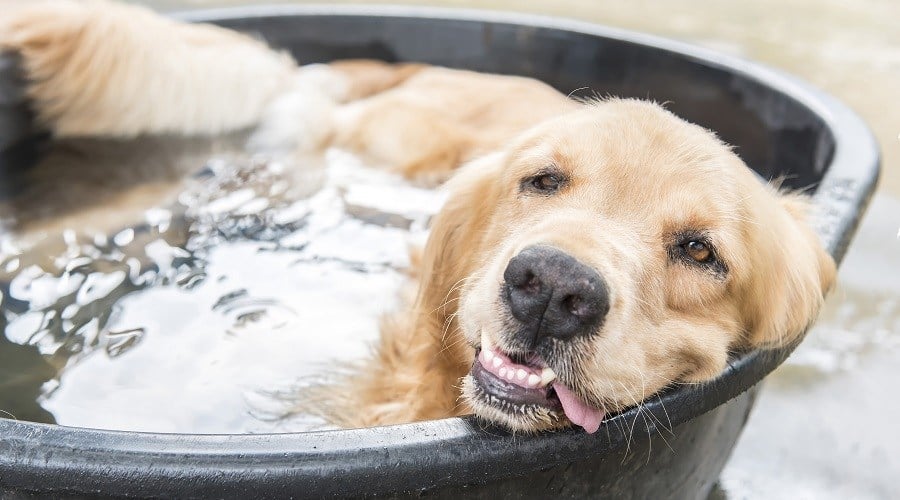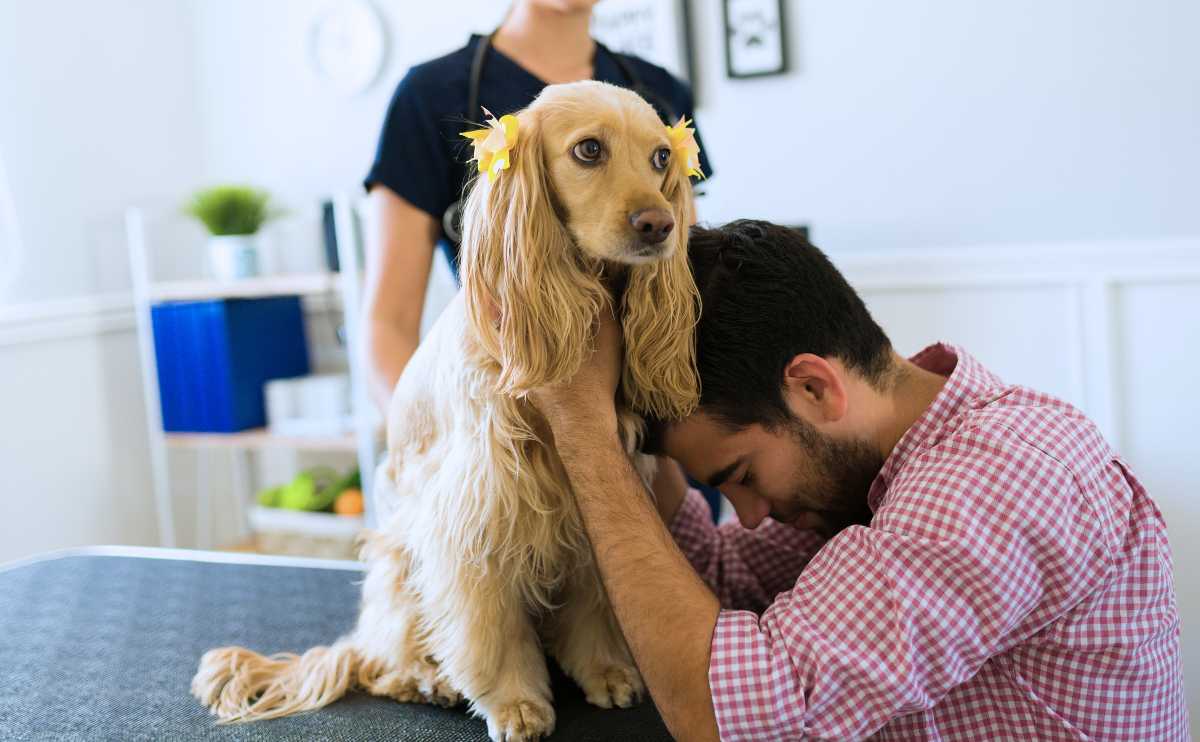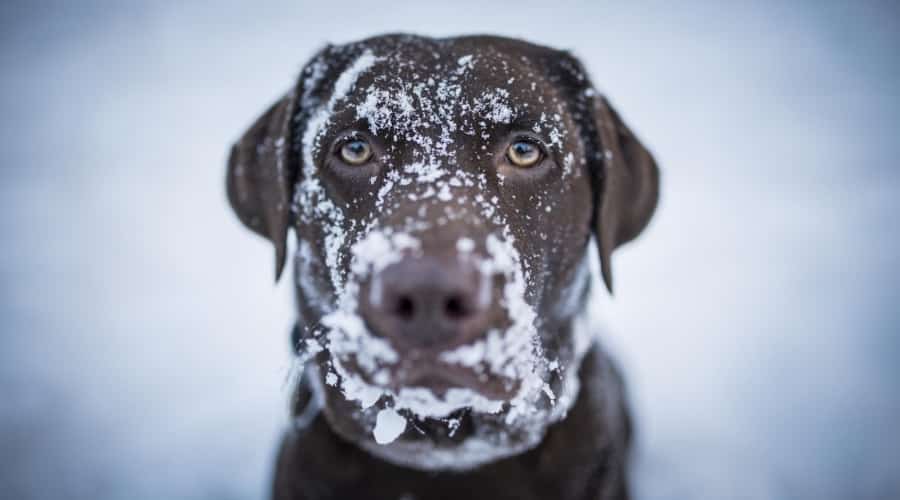Dog Ate Vaseline? Here’s What Comes Out The Other End!
When you purchase through links on our site, we may earn a commission. Here’s how it works.
Your dog just licked an entire jar of Vaseline like it was peanut butter, and now you’re wondering if the real mess is coming out the front… or the back.
Table of Contents
Spoiler: it’s the back. So, can dogs eat Vaseline? Here’s what’s actually dangerous about Vaseline for dogs, what’s just disgustingly slippery, and how to survive the poopocalypse (with your sanity and rugs intact).
Dog Ate Vaseline?
First of all: don’t freak out. If your dog ate Vaseline, chances are it’s not toxic, but you are in for a slick ride.
Petroleum jelly isn’t poisonous to dogs in small amounts, but it can’t be digested. That means whatever went in… is coming back out. Usually in the form of greasy, glistening poop that defies both physics and your cleaning supplies.
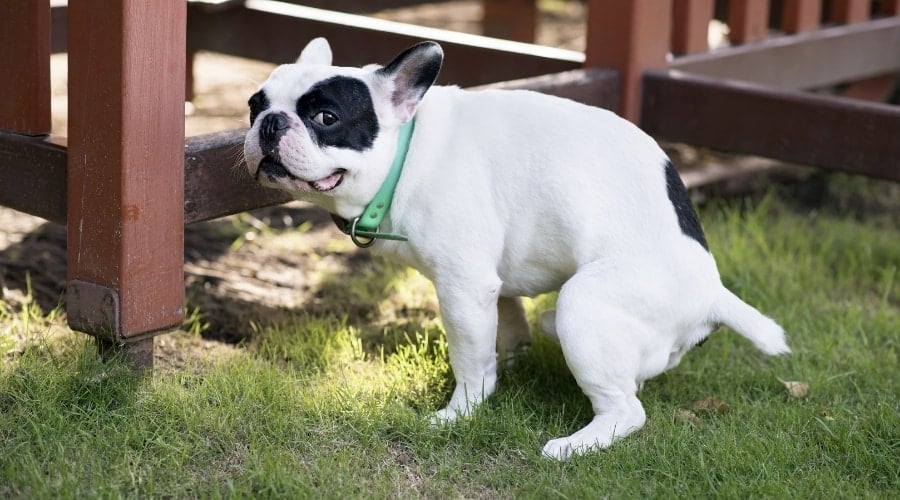
If your dog just licked a little off their paw or a tissue, you’ll probably just see some loose stool or extra shine in the yard for a day or two.
But if they really went for it, like jar-licking, gobble-it-down chaos, you might see:
- Runny or oily diarrhea
- Mild vomiting
- Stomach gurgles (followed by poop surprises)
- Slick stains in places poop was never meant to go
Most cases don’t require a vet visit, unless your dog has eaten a large amount, is a small breed, or shows serious signs, such as weakness or persistent vomiting.
Quick Take:
- Toxic? Nope, not usually.
- Messy? Oh yes.
- Vet visit? Only if symptoms get serious or if they have eaten a lot.
What To Do If Your Dog Eats Vaseline: 5 Steps
Not sure what to do next? Follow these quick steps.
1. Don’t Let Them Go Back for Seconds
If your dog is still mid-snack, abort the mission. Scoop the jar, the lid, and anything coated in goo out of reach. And yes, that includes their own paws.
Sometimes it’s easier to just remove the dog from the crime scene so you can assess the damage, and your carpet.
2. Don’t Play DIY Vet
I know, you’re tempted to Google “how to make my dog throw up.” But with Vaseline? Hard pass. It’s slick going down, but it’s even worse coming back up.
Making your dog vomit without vet instruction can do more harm than good and could lead to aspiration pneumonia, which is way more serious than a greasy poop emergency. Leave the puking decisions to the pros.
3. Watch for Weirdness
In most cases, Vaseline makes for a messy 24 hours, but not a medical crisis. Expect loose, slippery poop. Maybe some extra gurgling. But if your dog is otherwise acting normal, eating, and not trying to reenact The Exorcist, you’re probably fine.
Still, this is a good time to keep your eye on them… and maybe block off access to your favorite rug.
4. Call the Vet If Things Get Dicey
If your dog seems off, lethargic, not eating, vomiting more than once, or they’ve raided a scented or medicated Vaseline, call your vet. The same goes if they managed to eat the entire plastic container. (Yes, that’s happened. No, it doesn’t end well.)
Better to be the overreacting pet parent than the one Googling “foreign object dog surgery cost” at 2 a.m.
5. Don’t Panic, But Don’t Assume It’s Harmless
Petroleum jelly usually slides right through with minimal drama, but it’s not totally harmless. Especially for small dogs, repeated ingestion, or weird additives (like cocoa or aloe) can cause bigger problems. When in doubt? Call your vet and let them tell you whether it’s time for action… or just air freshener.
Is Vaseline Toxic to Dogs, or Just Gross?
Let’s clear this up: Vaseline is not toxic to dogs in most cases. It’s made of petroleum jelly, which is technically non-toxic, but definitely not food.
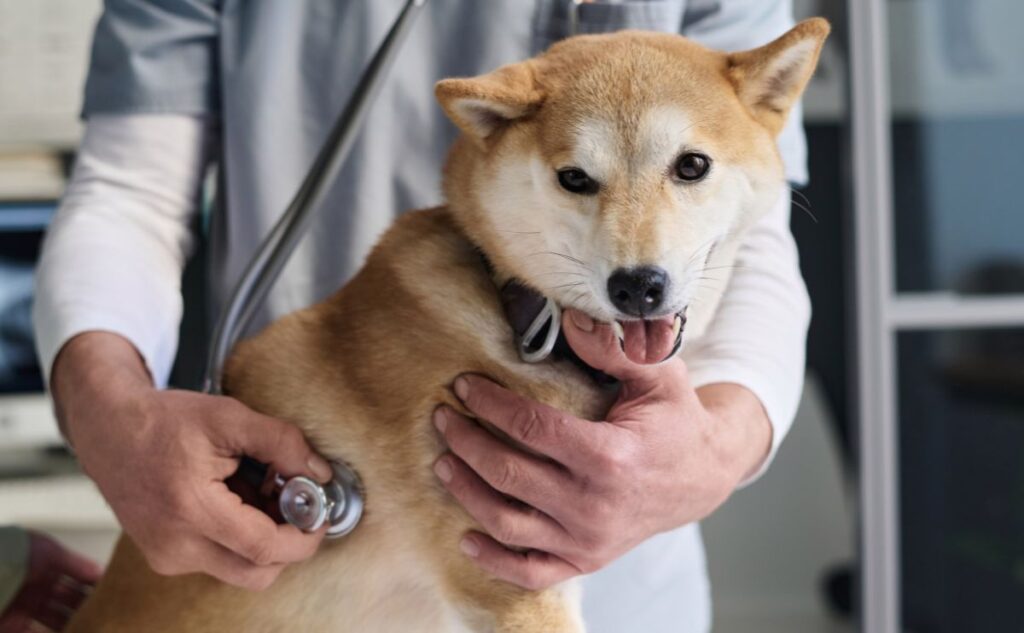
I have spoken with Dr. Joanne Woodnutt MRCVS, a qualified veterinarian working in the UK, about whether Vaseline is toxic to dogs, and here’s what she had to say:
Vaseline is a product of low toxicity to dogs. Although ingesting Vaseline isn’t usually dangerous, it is advisable to contact your vet for advice. Your veterinarian will be able to assess your pet’s condition and determine what course of action is necessary.
– Dr. Joanne Woodnutt MRCVS, a Veterinarian Contributor to Canine Journal
So, if your dog licked a glob or two? Probably no big deal. If they downed half a jar like it was peanut butter? That’s when their digestive system hits the “slide” button.
So, why do people panic? Because Vaseline isn’t meant to be eaten, and when it is, it can:
- Act like a laxative (hello, diarrhea)
- Causes vomiting or gas
- Coats the digestive tract and slows nutrient absorption
- Leads to a very awkward phone call with your vet
That said, the bigger risk is choking or intestinal blockage, especially for small dogs, if they swallowed a large, solid chunk or ate the container. Here’s a breakdown:
| Substance | Toxic to Dogs? | What It Can Do |
|---|---|---|
| Pure petroleum jelly | No | Upset stomach, diarrhea |
| Scented Vaseline | Sometimes | Some additives (like cocoa butter or menthol) can be risky |
| Vaseline container | Yes | Choking hazard or blockage |
Bottom line? It’s not poison, but it’s also not lunch.
Why Do Dogs Eat Vaseline?
Dogs eat Vaseline for the same reason they chew socks or dig through the trash: they’re curious, bored, or just weirdly food-adjacent motivated.
Here’s what Dr. Joanne Woodnutt has to say about why dogs might eat Vaseline.
At young ages, canines like to explore their surroundings through chewing and sometimes confusing inedible items for toys or food. A dog’s heightened sense of smell often attracts them to off-limits items that we store within our homes.
A dog may lick Vaseline because it smells or tastes nice. This is especially true if it’s a lip balm or product with flavoring. Licking you after you have applied Vaseline may lead to the ingestion of this product. Your pup may simply be licking you because they love you.
Vaseline is usually supplied in small plastic pots or metal tins. These can be tempting to puppies or dogs looking for something to chew and inadvertently ingested by puppies and adolescent dogs. In other words, eating Vaseline is usually an accident.
Some dogs make eating inedible items a regular habit, and this may indicate a behavioral or underlying medical condition. These dogs need a check-up with the veterinarian.
What Comes Out the Other End
So… your dog ate Vaseline, and now you’re playing poop roulette.
Here’s what to expect: loose, shiny, Vaseline-lubed stool that may glide out like it’s been pre-oiled by a mechanic. If you’re lucky, it’ll happen in the yard. If not, well, RIP to your carpet.
Here’s what vaseline-poops usually look like:
- Greasy texture (seriously, it might glisten)
- Runny or soft consistency
- May stick to fur or leak out unnoticed
- Frequent or urgent pooping
Some dogs even pass it in jelly-like blobs, especially if they’ve had a large amount. Gross? Yes. Dangerous? Not usually.
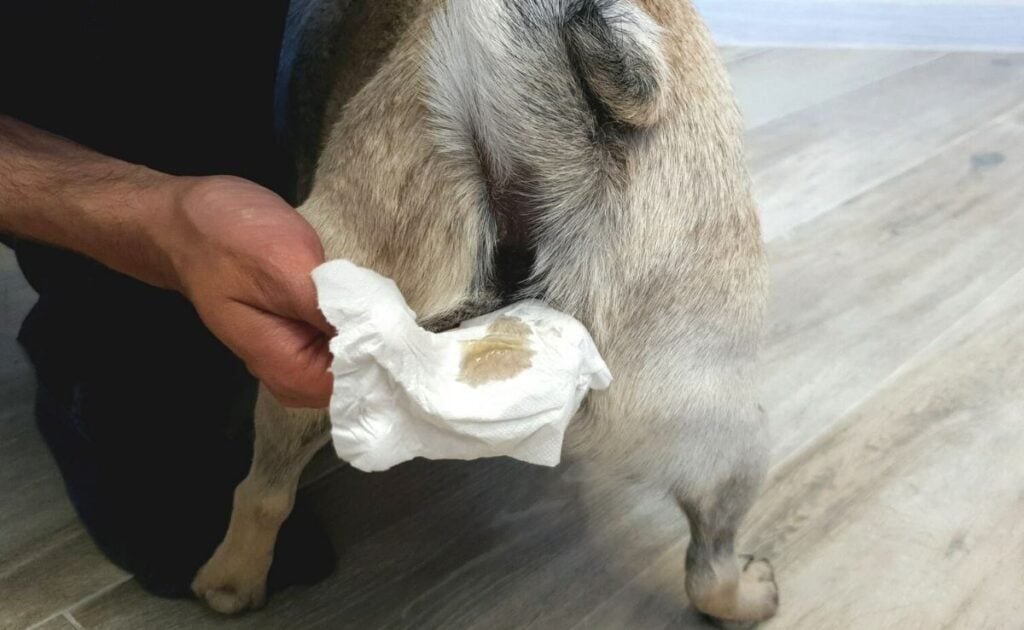
Quick Tip: Wipe your dog’s rear with a warm cloth or pet-safe wipe after each accident, because this stuff sticks.
How Much Is Too Much?
Not all Vaseline incidents are created equal.
If your dog licked a tiny glob off their paw or your hand? No big deal. But if they housed half a jar like it was a midnight snack, you might want to pause your evening plans.
Here’s a breakdown based on how much your dog ate and how worried you need to be:
| Amount Eaten | Dog Size | What You’ll Likely See | Hydrate, call the vet if symptoms persist |
|---|---|---|---|
| A lick or dab | Any | Maybe soft stool, maybe nothing | Chill. Watch for minor symptoms. |
| A spoonful | Medium/Large | Loose poop, some gassiness | Monitor. No vet needed (usually). |
| A spoonful | Toy/Small dog | Diarrhea, vomiting, possible vet call | Hydrate, call vet if symptoms persist |
| A few spoonfuls to jar | Any size | Slick poop, vomiting, GI upset | Monitor closely. Vet may advise. |
| Unknown or huge amount | Any size | Risk of blockage or choking | Call vet. Especially if lethargic. |
Here Are 3 Things That Matter Most
- Your dog’s size – Small dogs = less room for error
- The type of Vaseline – Scented or medicated? Riskier than plain
- Container ingestion – If they ate the plastic tub or parts of it, call your vet immediately. That’s a blockage risk, not just a poop party
Can’t tell how much they ate? Assume the worst and monitor closely for 24 hours.
When To Call The Vet
Most cases of Vaseline ingestion don’t require a vet visit, but some do.
If your dog is showing unusual symptoms or you’re unsure how much they actually ate, it’s always better to make the call. A quick phone consult can save you a lot of stress (and potentially a messy situation from getting worse).
Call your vet if you notice:
- Ongoing vomiting
- Diarrhea lasting more than 48 hours
- Lethargy or signs of pain
- Refusal to eat or drink
- Blood in stool or vomit
- Any signs they may have eaten the container too
Even if it’s “just” Vaseline, large amounts, especially in small dogs or puppies, can lead to digestive blockages, dehydration, or nutrient absorption issues.
Be ready to answer these five common questions:
- How much Vaseline was eaten? (Estimate: a lick, spoonful, half the jar?)
- When did it happen? (Timing helps determine if symptoms are still developing.)
- What’s your dog’s weight and breed? (Dose size matters more for small dogs.)
- Have there been any symptoms yet? (Vomiting, diarrhea, strange behavior, etc.)
- Was it scented or medicated Vaseline? (Some versions contain toxic additives like cocoa butter or menthol.)
If your vet is concerned, they may ask you to bring your dog in for an exam or simply advise you to monitor at home and report back if symptoms escalate.
Can Vaseline Kill My Dog?
This is a common worry for pet parents. Ingestion of normal Vaseline is unlikely to cause death in your canine companion. In fact, in the majority of cases, ingestion of Vaseline is unlikely to cause any harm to furry friends at all.
Often, only mild gastrointestinal upsets such as tummy aches, vomiting, and diarrhea are evident in dogs that have eaten Vaseline. And in cases where your dog eats too much, they can get dehydrated.
If they ingest Vaseline, especially in small amounts, such as your pup licking Vaseline from your skin, then it is unlikely that any veterinary intervention will be required at all.
Don’t forget to check the ingredients in your Vaseline. Some types contain other ingredients, such as cocoa butter or aloe, which may cause issues. If your Vaseline contains ingredients other than petroleum jelly (also known as petrolatum), you should consult your veterinary clinic for advice.

How Pet Insurance Can Help
While most Vaseline incidents aren’t serious, things can escalate quickly, especially if your dog swallows a large amount, eats the container, or shows signs of a blockage. Emergency vet visits, X-rays, overnight monitoring, or even surgery can get expensive fast.
This is where pet insurance can be a lifesaver. A good policy can cover unexpected accidents, such as foreign object ingestion, emergency exams, or follow-up treatment. We have an in-depth guide on the best pet insurance for dogs, and you can also use our free pet insurance quote below.

How to Clean Vaseline Off Your Dog: 5 Steps
So your dog didn’t just eat Vaseline, they wore it. Whether they rolled in the jar or tried to self-moisturize, now you’ve got a greasy pet and an emergency bath on your hands.
Here’s how to clean them up without spreading the mess all over your house:
1. Blot The Goo, Don’t Rub It In
Start with dry paper towels, old rags, or even a clean T-shirt. Dab gently to lift off as much Vaseline as possible before you introduce water. Rubbing or rinsing too soon will only smear it deeper into the fur.
Why this matters: water spreads petroleum jelly like melted butter. Start dry, or things get worse.
2. Apply Cornstarch or Baking Soda
Sprinkle a generous amount of cornstarch or baking soda onto the greasy areas. Let it sit for a few minutes to allow the oil to absorb into the fur. This helps break down the slickness before washing.
Optional: baby powder works too, as long as it’s unscented and safe for pets.
3. Comb It Through
Use a soft brush or wide-tooth comb to work the powder through the coat. This pulls out a surprising amount of Vaseline and loosens the remaining gunk.
For long-haired dogs, be patient; this step takes time but saves you in the bath phase.
4. Wash With Dawn Dish Soap
Time for a bath. Skip the dog shampoo and use unscented Dawn dish soap, the same kind used on wildlife after oil spills. It’s safe, effective, and breaks down grease fast.
Lather gently, focusing on the greasy spots. Rinse thoroughly. You may need to wash twice if the coat still feels slick. Avoid getting soap near the eyes, ears, or other sensitive areas. If Vaseline got into those places, it’s best to call your vet before attempting a deep clean.
5. Rinse, Dry & Prevent Re-Licking
After the bath, towel dry thoroughly using something you don’t mind sacrificing. Then, prevent your dog from licking off any leftover residue. Use a cone, a fitted dog shirt, or a soft towel wrap to block access to the cleaned areas.

Can I Still Use Vaseline On My Dog?
Short answer: technically, yes, but it’s not ideal. Vaseline isn’t toxic in small amounts, and it’s often used on dry human skin, so it’s easy to assume it’s safe for dogs.
And while it can be applied to things like cracked paw pads or dry noses, there’s a problem: most dogs lick it off. That turns a helpful skin treatment into a digestive mess.
What Happens If They Lick It Off?
When your dog licks Vaseline, they’re ingesting petroleum jelly, a substance that doesn’t absorb nutrients, isn’t easily digested, and causes all of the issues I’ve already mentioned.
Over time, repeated ingestion could irritate the gut lining or lead to nutritional issues, especially in small or sensitive dogs.
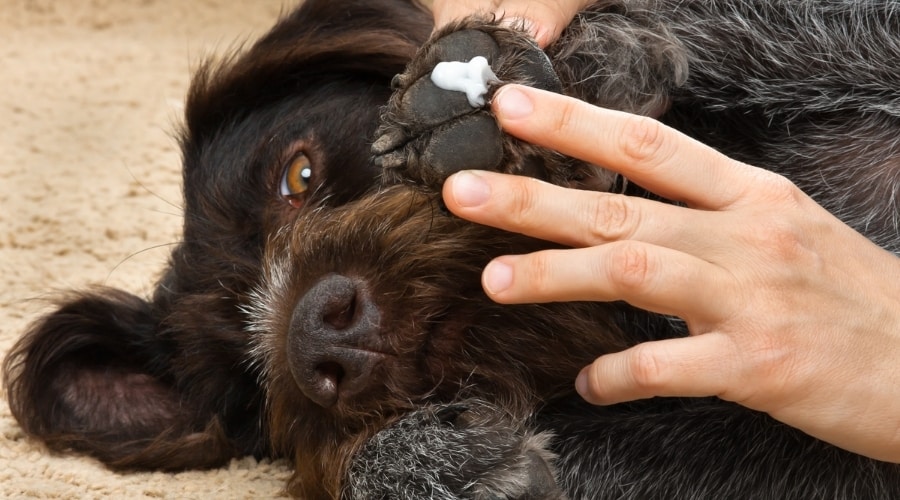
When Is Vaseline Okay To Use?
According to Dr. Woodnutt, you should not use human products, such as creams, lotions, or shampoos, on your pet’s skin. These products are formulated for human skin, which has a different pH from a dog’s skin, and therefore, human products can be very damaging to dogs.
However, if you have nothing else to hand, you can use a small amount of plain, unscented Vaseline on areas they can’t easily lick, like the tips of the ears or dry elbow patches. But in the meantime, you need to order dog-safe products.
Remember, don’t use Vaseline on:
- Paws, noses, or bellies without supervision
- Around the eyes or inside the ears
- If it’s a scented or medicated version (those can be harmful)
When possible, always use dog-safe alternatives. There are safer, vet-approved products made just for dogs that won’t cause a digestive meltdown if licked. Look for:
- Natural paw balms
- Coconut oil–based skin soothers
- Products labeled “lick-safe” or “pet-safe”
I’ll cover some of the best options in the next section.
Better Than Vaseline: 3 Vet-Approved Paw Balms
If your goal is to help your dog’s dry paws, nose, or skin, Vaseline isn’t your best option. It’s made for humans, and while not toxic, it’s not meant to be licked off like a midnight snack. Here are some dog-safe alternatives that moisturize without the greasy aftermath:
1. Musher’s Secret
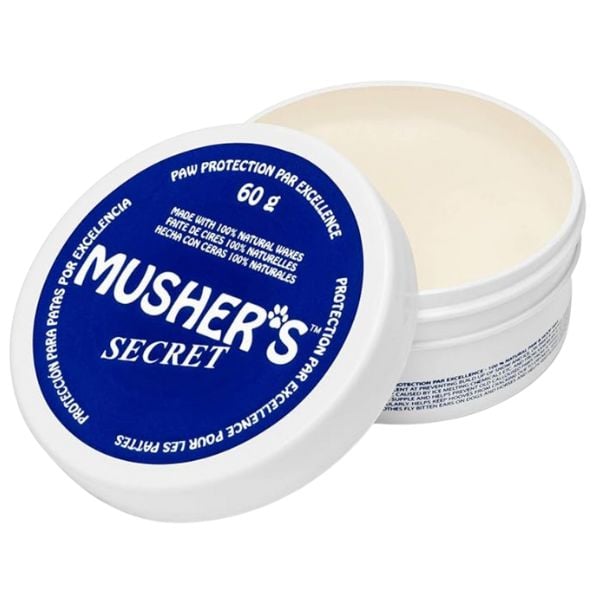
A cult favorite made from natural waxes and oils. Originally made for sled dogs, it protects against heat, salt, and snow while soothing cracked paw pads.
- Lick-safe
- Non-toxic
- Dries quickly without the slime
2. Natural Dog Company Paw Soother
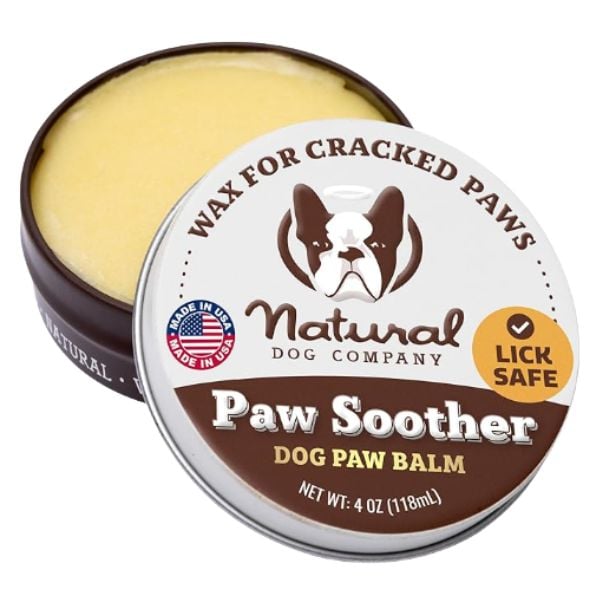
Organic, plant-based balm that targets dry, cracked, or irritated paws. Comes in a stick or tin and is easy to apply.
- Vet-approved formula
- Great for healing minor skin issues
- Smells mild, not medicinal
3. Coconut Oil
If you need a quick fix, simply dab plain organic coconut oil onto dry skin or paws. It’s not ideal for long walks, but it works for spot hydration.
- Antimicrobial
- Digestible (in moderation)
- Use sparingly to avoid licking overload
We have a guide on the best coconut oils for dogs, with additional tips on using coconut oil and its other benefits.
Tip: Always check labels for unscented, pet-safe, and lick-safe indicators. Avoid products with essential oils unless approved by a vet.
If you’re tempted to use Vaseline for a skin condition, here’s what Dr. Woodnutt advises:
It is best to contact your vet if your pet has a skin condition. There are many causes of skin disease in dogs. Your veterinarian will be in the best position to diagnose and treat that condition. Skin diseases can be a sign of a serious condition, so it is advisable to have your pup examined for peace of mind.
Can Dogs Eat Vaseline? FAQs Answered
Do you have more questions about dogs and Vaseline? You’re not alone. Below are answers to the most common things dog owners ask about vaseline and whether it’s toxic to dogs.
Still wondering something I didn’t cover? Drop your question in the comments, because we’re happy to help (and you’re probably not the only one asking).
Is Vaseline Toxic to Dogs?
No, Vaseline (petroleum jelly) is not toxic in small amounts, but it can cause digestive upset in some pups. Expect loose stool, vomiting, or greasy poops if ingested. Be especially cautious with scented or medicated versions, as they may contain ingredients like cocoa butter or menthol, which can be harmful.
What Is Vaseline?
Vaseline is petroleum jelly and has been a household staple for many years. Petroleum jelly is a mixture of natural waxes and mineral oils. It’s used as a moisturizer and to treat dry skin in humans.
Vaseline is also available as a lip balm to treat cracked and sore lips. These products may be flavored or colored, making them more attractive to dogs. Vaseline may also be mixed with other products, such as cocoa butter, which may be more dangerous to your pup.
What Should I Do If My Dog Ate Vaseline?
If your dog ate a small amount, monitor for minor symptoms, such as diarrhea or vomiting. Most cases resolve on their own. If they ate a large amount or show more serious signs, lethargy, refusal to eat, nonstop vomiting, call your vet immediately.
Can I Give Vaseline to My Dog for Constipation?
No. While petroleum-based products, such as liquid paraffin, are occasionally used under veterinary supervision to treat constipation, Vaseline should never be administered as a laxative.
There are safer, pet-specific treatments available. Always consult your veterinarian before giving your dog any medication to relieve constipation.
Can Vaseline Help a Dog Pass a Foreign Object?
No, and it may be dangerous. While veterinarians sometimes use liquid paraffin to help with digestion and pass smooth objects, this is only done after proper diagnosis and imaging.
Using Vaseline at home to “push things through” can make matters worse and lead to life-threatening complications. If your dog has eaten something they shouldn’t have, call your vet. Do not try to treat it yourself.
Can I Use Vaseline on My Dog’s Paws?
It’s not recommended. While Vaseline can act as a barrier on dry or cracked paws, dogs often lick it off, which can lead to ingestion issues. Additionally, cracked paws can be a sign of an underlying health issue. Ask your vet about dog-safe balms designed for paw protection, or boots, especially in cold weather.
My Dog Licked Me After I Applied Vaseline. Should I Worry?
Probably not. A little Vaseline won’t hurt, but the real risk comes from other products you may have applied to your skin, such as medicated creams or essential oils. If you’re unsure what your dog may have licked, or if they show symptoms, contact your vet or the Pet Poison Helpline at (855) 764-7661.
Will My Dog Be Okay After Eating Vaseline?
In most cases, yes. Symptoms typically pass within 24–48 hours. Call your veterinarian if the symptoms worsen, last more than two days, or if your dog has eaten a large amount.
How Long Will Vaseline Stay in My Dog’s System?
Usually, within a day or two, everything passes, literally. You may notice greasy or loose stools during that time. Hydration and monitoring are key.
Keep Your Pup Clean, Comfy & Cared For
Vaseline mishaps aside, taking care of your dog doesn’t have to be a messy task. A good dog paw cleaner can help remove dirt and debris before it ends up all over your floors (or their tongue). Use a gentle, dog-safe shampoo to keep their coat clean without drying out their skin.
Don’t forget their nails; quality nail clippers make trimming easier and less stressful for both of you. And after all that? Treat them to some serious chill time with the best dog bed for their size and sleep style. Because a clean, comfortable dog is a happy dog, and a happy dog makes your life a lot easier.
Got a Greasy Tale to Tell? We want to hear it! Did your dog go full Vaseline bandit mode? Share your story in the comments, including what they ate, how it ended, and what you definitely learned the hard way. Let’s swap cautionary tales and laugh through the mess.
